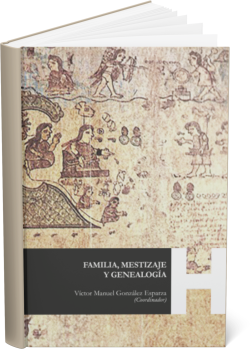FAMILY, MISCEGENATION AND GENEALOGY
Synopsis
This book is a collective effort to demonstrate the relevance of family history and genealogy in Mexican cultural history. While there are many discussions about cultural history, there are few lines of work, such as family history, that have transformed the history of Mexico to show a history closer to individuals and institutions, a 'decentralized' history, as Natalie Zemon Davis would propose. If anything can be affirmed after the various turns (linguistic, cultural, global, etc.) it is that the field of history has expanded and, at the same time, has generated new challenges for history in use, particularly for regional history.
After the great boom of regional history, practically every history program in the states is dedicated to it, but it is necessary to ask again if there is such a thing as regional history, as it was done a few years ago. Because although Luis González's proposal innovated the centralist and, to a large extent, positivist - or rather, "empiricist" - historiography until the 1960s, the inertia of the great nineteenth-century tradition has permeated practically all fragmented history. Hence the need to reflect on a regional history conducive to generating great advances in the recovery of information, but little in the proposal of a more comprehensive history of our past, because fragmented histories are given as part of a process, also of an empiricism that does not dare to say its name, as well as of a development in political decentralization that seems to be in crisis, but has disconnected histories in such a way that it would seem to represent each history of a state of the Republic as 'unique and unrepeatable', to use the old phrase of German historicism.
Chapters
-
Prologue
-
History of the surname Acoltzin
-
Kinship, genealogies and matrimonial impediments in Sombrerete (1715-1825)
-
Households and families in New GaliciaVariations and reflections according to the 18th-century registers
-
The Arreola familyMethodology and analysis for the construction of a family history in Michoacán between the eighteenth and twentieth centuries.
-
For a social and comparative history of miscegenation
-
The presence of relatives of the Marquises of Santillana and Dukes of Infantado (Mendoza) in New Spain and New Galicia. in New Spain and New Galicia.part II
-
Vicente Aparicio's notesReconstructing the family's history through his notes (1895-1933) and Family Search
-
The Soto and Sotomayor of “El Paso” in Teocaltiche
-
A brief insight into the lives of Juan Alonso Díaz de la Campa and José Vicente Beltrán y Bravo
-
Family networks, political kinship and sociocultural elitePower games in Aguascalientes during the Porfirian era
-
Refugio Reyes Rivas: family, society and thought
-
From orphan to rector of the Colegio de San Juan de Letrán: José María Lacunza (1809-1869)
-
Occupation and quality: the case of tapatío artisans in the early nineteenth century
-
Land and lineage: the cacicazgo of the Rojas de la Cueva and the commons of the town of Magdalena Apasco, 16th to 18th century.
-
The importance of the marital bond in the reconstruction of family networks

Downloads
Published
Series
Categories
License

This work is licensed under a Creative Commons Attribution-ShareAlike 4.0 International License.













